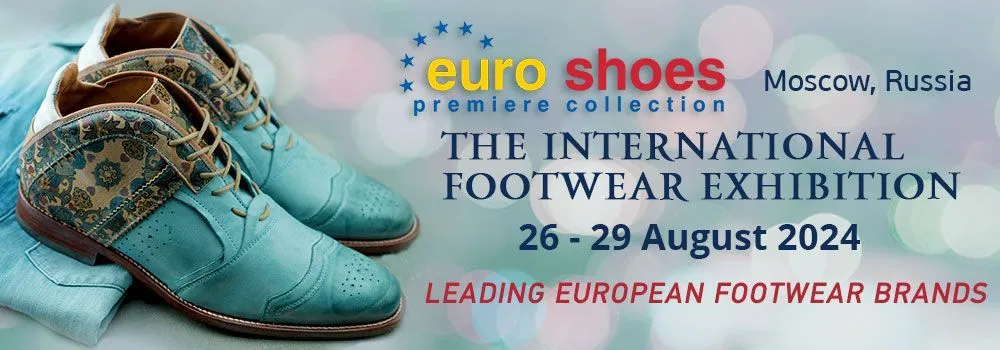
Sales promotion. Are there only sales?

The first sales (or sales in English) began in Europe from the end of the 18th century, and in Russia from the beginning of the 19th century. Everywhere they pursued one goal: shopkeepers sought to sell stale goods. Since then, little has changed. In most modern stores, sales are arranged for the same purpose - to get rid of "stocks." Galina Kravchenko, the leading consultant of FCG, talks about how to properly organize sales in shoe stores, what can interest the buyer and set him up for a purchase.
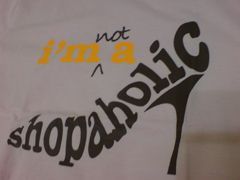 To sell the entire seasonal collection without a trace is almost impossible. You can store goods in the form of inventories in a warehouse, you can continue to offer balances to customers in the hope that someday they will buy something. Both that and another way lead to material losses:
To sell the entire seasonal collection without a trace is almost impossible. You can store goods in the form of inventories in a warehouse, you can continue to offer balances to customers in the hope that someday they will buy something. Both that and another way lead to material losses:
- warehouse space disappears;
- working capital is frozen;
- Visitors, noting that the range is not updated, stop coming to the store.
In international practice, they believe that it is better to sell "stocks" at a discount of 50% than to completely lose the money invested in them. Footwear is a short-life product that is sold with a high trade margin, so sales are a must for a successful business. Without them, the warehouse will be overstocked.
Sales. pros
- Acceleration of turnover
- Liquidation of stocks
- Attracting New Customers
- Formation of the image of the company "with low prices" - if the company pursues this goal
Sales. Minuses
- “Blurring” of the target segment of consumers (often a problem for companies positioning themselves in the middle upper segment)
- Profit reduction per unit of output
- Temporary "overstock" of consumers - the likelihood of a decrease in the number of purchases in the future
Purpose and expediency of sales
The main goal of sales is to sell the leftovers. The main results are revenue growth, timely replenishment of cash flow (cash flow), which avoids attracting additional money. For reference - cash flow - the difference between the amounts of receipts and payments of cash of the company for a certain period of time.
But! A price reduction is only advisable if it is offset by an increase in purchases. For example, an additional price reduction in the “dead” season (for example, in the first weeks of July) may not bring the desired result. Indeed, in early July, consumer activity is falling. And those who were ready for purchases will make them at June prices. An additional discount will not increase the number of buyers or sales.
If you want to lose as little money as possible during sales, then the sale should be planned in advance, no matter how you would like to not do it. One of the most important points in planning is the choice of terms, so that the discount is the motivation for the purchase.
Selecting dates will help keeping statistics that take into account sales by seasonal groups.
Shoe specificity takes into account several groups: summer, all-weather, demi-season (spring-autumn), winter. For each of them, you should plan your dates for the sale. Sales promotions are more logical to start before the expected recessions.
In the spring-summer season in the Central region of Russia, the peak sales of the Spring-Autumn group fall in mid-March and can last until mid-April. The duration of the high sales season depends on the weather of each particular season, but an analysis of statistics over several years allows us to determine the periods of maximum and minimum sales for each company, as well as to suggest a “temporary corridor” of a possible decline in sales.
By the way, at the time of the decline in sales of spring-autumn shoes, there is a peak in sales of all-season shoes. There is a consumer interest in buying shoes at the end of March and the beginning of April, therefore it is advisable to start the spring-autumn shoe sales promotion campaigns at the beginning of sales growth for the all-season shoe group. Be sure to understand that sales promotion should be targeted. For stimulation, it is necessary to single out only those models according to which residues are assumed.
Sales promotions
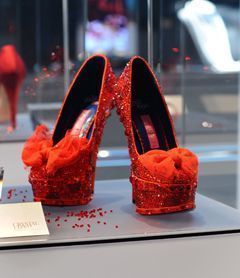 Sales are just part of a wide range of promotions.
Sales are just part of a wide range of promotions.
Sales promotions can be price or non-price.
In the case of non-price incentives, the buyer is offered an additional benefit to the purchase, or as during the BTL campaigns, additional attention is attracted. These promotions can serve for long-term promotion of the brand image, increase brand knowledge and increase the number of loyal customers.
Example of non-price incentive stocks:
- Contests, lotteries and prize draws
- Movie tickets from movie theaters
- BTL stimulation
Price stimulus shares directly indicate the buyer's benefit from the price.
Options for stock price stimulation:
- Discounts
- Buy two pairs - get a third as a gift
- Gifts for purchase
Promotions of sales promotion are best carried out in the second half of the season in several stages.
The practice of price action shows that there is no single recipe for success. The conditions and terms of their implementation depend on the characteristics of each particular business. First of all, from financial indicators. We can definitely say that a price reduction of less than 30% is not an incentive to visit a store. However, such a price reduction, if accompanied by window dressing and the attachment of special price tags, that is, visual highlighting of models, becomes an advertising incentive. Changing the elements of visual merchandising allows you to draw the attention of the buyer to the store.
Recently, you can see the action "All for the same price." For example, "All shoes at 1500 rubles." Such approaches are effectively used as measures that equalize the price in the first half of the season. On the one hand, you draw attention to models whose sales are less than planned. On the other hand, you have the opportunity to reduce the price by less than 30%, but at the same time show the buyer an attractive price.
Another example of the use of such promotions is special promo collections. Initially, the price is 1500 rub. implies a targeted margin, often not underestimated. At the same time, in the first half of the season in the store a category of goods appears at an attractive - low price, and such a product makes it possible to highlight in the hall a special area decorated with POS materials. And also to promote the event in the windows. For the buyer, the illusion is created that prices are lower, while the company respects its financial interests.
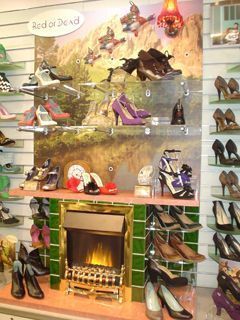 Case Study: Price Incentive Planning Example
Case Study: Price Incentive Planning Example
Company Description:
Type of business: retail multi-brand
Store format: 100 sq. m
Assortment: women's shoes, accessories, shoe cosmetics
Range of products: more than 500 models
Price segment: medium (3000-5000 rubles per pair)
Regions in which the company's stores are represented: Central, North-West, South.
An example of building a chart of marketing campaigns:
- The graph shows an example of stock planning according to the ruble statistics of company sales.
- The start of the stock is planned before the peak of sales.
- In the spring-summer period, it is important to interest the buyer before the May holidays, as in shoe practice after May weekends sales decrease every year
- To support buying interest, three price action plans are planned. The number of shares is justified by the trend of sales.
Effective Tools Used to Drive Sales
The minimum set of marketing communications used to conduct sales promotion campaigns is visual merchandising and direct sales.
A distinctive and amazing feature of Russian shoe stores is the limited use of visual merchandising.
The main reason for this paradox is that companies do not work with the structure of their assortment, they do not have a clear classifier, there are no rigid proportions of different groups in the assortment, and there is no logic for laying out different product groups on the trading floor.
As a result, the chaos in the assortment becomes chaos squared on the shelves in the store. Naturally, this is reflected in sales in the most destructive way. Therefore, when planning sales, you should think ahead of time about the assortment system, at least, prescribe a product classifier.
Merchandising tools are not limited to POS materials, window dressing and interior design. Most of these tools are most directly related to the assortment policy: space planning, zoning of the sales area, trade equipment, product layout.
But, even without a comprehensive system of visual merchandising, each shoe store can use at least some tools to quickly reduce balances this season:
- layout of the collection;
- calculation;
- POS materials;
- window dressing.
Collection layout
How and where to place models during sales? For example, from the second week of March (terms are conditional, depending on the region), the company wants to highlight some models from the “spring-autumn” group with insignificant discounts. At the same time, sales for all-season shoes are growing during this period. In this case, in the first part of the hall there are shoes that are in great demand, that is, all-weather.
Stimulated spring-autumn models should be located in the second part of the hall along with all other models of their group.
We must remember two more golden rules of calculation. Bestsellers are located in the most passable places. In the immediate vicinity of the best-sellers, you can have low-liquid models, the sales rate of which is less than planned.
Visual Merchandising: Layout
The most convenient layout for buyers is the layout by functional-style groups (FSH), that is, zones with BUSINESS and SPORT shoes are highlighted on the trading floor, buyers do not have problems finding the right pair.
During sales in mass-market stores, a change in the calculation principles is possible.
Visual Merchandising: POS Materials
The retail space and equipment of shoe stores allows the use of various types of POS materials. Using navigation - special posters, posters, pillars - in the store there are zones with goods whose sales stimulate. The materials themselves must be located in the area with the sales product or the promoted product.
Direct sales are a key element of shoe stores
Often, when choosing shoes, the buyer focuses on the advice of the seller. How does the seller’s work style change during the discount season? How to motivate him during this period?
There are three ways to do this:
- assortment plans;
- bonuses for the sale of certain assortment groups;
- competition between shops.
Assortment plans imply a differentiated approach to reward for sales of different assortment groups. This approach guarantees a reduction in the balance of the target groups of the assortment. However, it should be noted that the introduction of this approach implies the special capabilities of the IT system and the skills of using mathematical models to calculate staff motivation.
Bonuses for the sale of individual product groups are paid as a bonus when fulfilling sales plans for individual product groups. The frequency of bonus payments is determined by the sales period of the group of goods that they stimulate.
Competitions between stores can be aimed both at stimulating sales in general, as well as individual groups of goods.
examples:
- Competition for the best store;
- Store No. 1 according to service standards;
- Competition for the best seller.
Sales Performance Factors:
- sales promotion can be both price and non-price;
- the key to success of the action is its timely implementation;
- advance planning allows you to get the desired results;
- The most effective communication channels used to stimulate sales are visual merchandising and direct sales.
Weekly sales plan
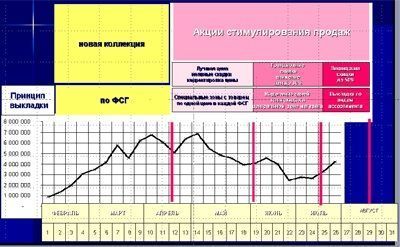
| Please rate the article |
Materials on the topic

Omnichannel on the shelves. What is it, which companies are it suitable for and should they follow this trend?

Technology Selling Issues
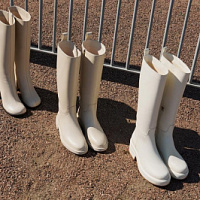
Does an online store need omnichannel?

I doubt and object: how to find an approach to difficult clients?

How to create selling visual content for online based on the identified unique selling proposition?
Popular
 Coach turned to Big Data analysis and won the interest of a young audience
American handbag brand Coach has planned the success of its Tabby model among a younger audience, Generation Z, by turning to big data analysis, abandoning traditional and analogue tools, such as human intuition or the ability of any executive to sense “which way the wind will blow,” writes B.O.F.
Coach turned to Big Data analysis and won the interest of a young audience
American handbag brand Coach has planned the success of its Tabby model among a younger audience, Generation Z, by turning to big data analysis, abandoning traditional and analogue tools, such as human intuition or the ability of any executive to sense “which way the wind will blow,” writes B.O.F.
 IDOL updates the concept
The IDOL brand, part of the Melon Fashion Group portfolio, opened the first flagship in an updated concept in the Aviapark shopping center in Moscow.
IDOL updates the concept
The IDOL brand, part of the Melon Fashion Group portfolio, opened the first flagship in an updated concept in the Aviapark shopping center in Moscow.
 Seven “sins” of the shoe business. How do owners harm the company with their own hands?
Why is Company X able to create a strong, profitable brand, but Company Y is struggling to make ends meet? Many people prefer to attribute success to luck, luck, or the support of strong patrons. And few people ask themselves the question: “What am I doing wrong?” Moreover, many entrepreneurs begin to harm their business from the first day of its opening. In this article, together with SR expert in the field of fashion business management and development, Maria Gerasimenko, we will look at the 7 main “sins” that business owners commit using specific examples.
Seven “sins” of the shoe business. How do owners harm the company with their own hands?
Why is Company X able to create a strong, profitable brand, but Company Y is struggling to make ends meet? Many people prefer to attribute success to luck, luck, or the support of strong patrons. And few people ask themselves the question: “What am I doing wrong?” Moreover, many entrepreneurs begin to harm their business from the first day of its opening. In this article, together with SR expert in the field of fashion business management and development, Maria Gerasimenko, we will look at the 7 main “sins” that business owners commit using specific examples.
 Louis Vuitton opens a new factory in Italy
Louis Vuitton has opened its second shoe factory in Italy. After opening the first one in Fiesso d'Artico in Veneto, the LVMH flagship brand has just opened a new production site dedicated to this category of footwear in the industrial zone of Civitano in the Marche region. There is also another brand production facility in Tuscany, where bags and leather accessories are produced, writes fr.fashionnetwork.com.
Louis Vuitton opens a new factory in Italy
Louis Vuitton has opened its second shoe factory in Italy. After opening the first one in Fiesso d'Artico in Veneto, the LVMH flagship brand has just opened a new production site dedicated to this category of footwear in the industrial zone of Civitano in the Marche region. There is also another brand production facility in Tuscany, where bags and leather accessories are produced, writes fr.fashionnetwork.com.
 The Euro Shoes@CAF exhibition will be held in Almaty
From March 11 to 13, the Euro Shoes@CAF (Central Asia Fashion) exhibition will be held in Almaty at the Atakent exhibition complex. The exhibition, which is the largest international event in the fashion industry in Central Asia, will present collections of clothing, shoes and accessories.
The Euro Shoes@CAF exhibition will be held in Almaty
From March 11 to 13, the Euro Shoes@CAF (Central Asia Fashion) exhibition will be held in Almaty at the Atakent exhibition complex. The exhibition, which is the largest international event in the fashion industry in Central Asia, will present collections of clothing, shoes and accessories.
 Euro Shoes will start operating on February 19 in Moscow!
The winter session of the international exhibition of footwear and accessories Euro Shoes premiere collection will be held in Moscow at the Expocenter from February 19 to 22. The organizers promise the presence of all the main participants at the exhibition, as well as new names from Europe, Asia and Russia.
Euro Shoes will start operating on February 19 in Moscow!
The winter session of the international exhibition of footwear and accessories Euro Shoes premiere collection will be held in Moscow at the Expocenter from February 19 to 22. The organizers promise the presence of all the main participants at the exhibition, as well as new names from Europe, Asia and Russia.
 American buyers couldn't buy Birkin bags and sued Hermès
French fashion house Hermès is facing a lawsuit in California from two customers who were unable to purchase exclusive Birkin bags. The fashion house is accused of unfair commercial practices.
American buyers couldn't buy Birkin bags and sued Hermès
French fashion house Hermès is facing a lawsuit in California from two customers who were unable to purchase exclusive Birkin bags. The fashion house is accused of unfair commercial practices.
 Why Rendez-Vous and Yandex Lavka released a “bread bag”
Shoe retailer Rendez-Vous announced the launch of a spring collaboration with Yandex Lavka and released a roll that resembles the shape of a woman’s handbag. This “Bread Bag” is presented in the Yandex.Lavka application at a price of 249 rubles. On the product packaging there is a promotional code for 1000 rubles, which can be spent in the Rendez-Vous network.
Why Rendez-Vous and Yandex Lavka released a “bread bag”
Shoe retailer Rendez-Vous announced the launch of a spring collaboration with Yandex Lavka and released a roll that resembles the shape of a woman’s handbag. This “Bread Bag” is presented in the Yandex.Lavka application at a price of 249 rubles. On the product packaging there is a promotional code for 1000 rubles, which can be spent in the Rendez-Vous network.
 Camper has released innovative sneakers - designers
Spanish brand Camper's new Roku sneaker features six interchangeable components to create up to 64 different looks and color combinations. Roku means "six" in Japanese.
Camper has released innovative sneakers - designers
Spanish brand Camper's new Roku sneaker features six interchangeable components to create up to 64 different looks and color combinations. Roku means "six" in Japanese.
 Christian Louboutin presented a collection in a cowboy style
At the Loubi Show in Paris, the French luxury brand Christian Louboutin presented its fall 2024 collection, following the trend - in the style of the Wild West. It included cowboy boots and rhinestone loafers.
Christian Louboutin presented a collection in a cowboy style
At the Loubi Show in Paris, the French luxury brand Christian Louboutin presented its fall 2024 collection, following the trend - in the style of the Wild West. It included cowboy boots and rhinestone loafers.
 Fashion Week takes place in Moscow
Fashion Week takes place in the Russian capital. Events include fashion shows, markets where you can purchase clothes, bags and accessories, and a B2B Showroom for fashion industry professionals.
Fashion Week takes place in Moscow
Fashion Week takes place in the Russian capital. Events include fashion shows, markets where you can purchase clothes, bags and accessories, and a B2B Showroom for fashion industry professionals.
 Turkish brand Vaneda on Euro Shoes
Street style, sport, outdoor, military – the main style directions of footwear of the company from Turkey
Turkish brand Vaneda on Euro Shoes
Street style, sport, outdoor, military – the main style directions of footwear of the company from Turkey
 Kari accuses Zenden of unfair competition and is suing the FAS
The largest Russian shoe chain, Kari, appealed to the Moscow Arbitration Court to declare the actions of the Federal Antimonopoly Service (FAS) illegal, writes RBC.
Kari accuses Zenden of unfair competition and is suing the FAS
The largest Russian shoe chain, Kari, appealed to the Moscow Arbitration Court to declare the actions of the Federal Antimonopoly Service (FAS) illegal, writes RBC.
 Fashion trends Fall-Winter 2023/24 for commercial footwear purchases
Permanent contributor to Shoes Report. Elena Vinogradova, an expert in sales and purchases in the fashion business, prepared an overview of the trends for the autumn-winter 2023/24 season especially for us.
Fashion trends Fall-Winter 2023/24 for commercial footwear purchases
Permanent contributor to Shoes Report. Elena Vinogradova, an expert in sales and purchases in the fashion business, prepared an overview of the trends for the autumn-winter 2023/24 season especially for us.
 MSCHF and Crocs launch "Big Yellow Boots"
Creator of the Big Red Boots, Brooklyn brand MSCHF has teamed up with American plastic clog and sandal brand Crocs for another oversized shoe. The new Big Yellow Boots will go on sale on August 9th.
MSCHF and Crocs launch "Big Yellow Boots"
Creator of the Big Red Boots, Brooklyn brand MSCHF has teamed up with American plastic clog and sandal brand Crocs for another oversized shoe. The new Big Yellow Boots will go on sale on August 9th.
 Five rules of professional lighting for a shoe store - something that is relevant in any season
When developing a lighting concept for shoe retailers, it is important to take into account not only the history of the brand, the architectural content of the premises, the target audience of the stores, but also the seasonality of the goods. With the onset of the cold season, client preferences change: bright weightless shoes are replaced by more massive models in discreet dark colors. Despite significant differences in summer and winter collections, the overall philosophy of the brand, its recognition should remain unchanged at any time of the year. Tatyana Ryzhova, an SR lighting expert in fashion retail, has identified five basic rules for a competent lighting concept for a shoe store for readers of the magazine, which will help to present winter assortment to customers in a winning way.
Five rules of professional lighting for a shoe store - something that is relevant in any season
When developing a lighting concept for shoe retailers, it is important to take into account not only the history of the brand, the architectural content of the premises, the target audience of the stores, but also the seasonality of the goods. With the onset of the cold season, client preferences change: bright weightless shoes are replaced by more massive models in discreet dark colors. Despite significant differences in summer and winter collections, the overall philosophy of the brand, its recognition should remain unchanged at any time of the year. Tatyana Ryzhova, an SR lighting expert in fashion retail, has identified five basic rules for a competent lighting concept for a shoe store for readers of the magazine, which will help to present winter assortment to customers in a winning way.
 I doubt and object: how to find an approach to difficult clients?
How good and serene would be the work of a salesperson if the customers were calm, cheerful, always knew exactly what they wanted, and bought, bought, bought! It is a pity that this is possible only in dreams. Therefore, we will not dream, but we will act. Together with Maria Gerasimenko, a permanent author of SR, we understand the doubts and objections of buyers and build a strategy for working with them. Our expert pays special attention to the two main objections of buyers, on which 82% of sales are lost.
I doubt and object: how to find an approach to difficult clients?
How good and serene would be the work of a salesperson if the customers were calm, cheerful, always knew exactly what they wanted, and bought, bought, bought! It is a pity that this is possible only in dreams. Therefore, we will not dream, but we will act. Together with Maria Gerasimenko, a permanent author of SR, we understand the doubts and objections of buyers and build a strategy for working with them. Our expert pays special attention to the two main objections of buyers, on which 82% of sales are lost.
 EURO SHOES presents an updated section of the GLOBAL SHOES exhibition with collections of shoe and bag brands from Asian countries
EURO SHOES premiere collection is expanding. Along with the traditional pool of leading European footwear brands from Germany, Spain, Italy and Turkey, several dozen footwear and bag brands from the Middle Kingdom will be presented in the GLOBAL SHOES section at the Moscow Expocentre from August 29 to September 1.
EURO SHOES presents an updated section of the GLOBAL SHOES exhibition with collections of shoe and bag brands from Asian countries
EURO SHOES premiere collection is expanding. Along with the traditional pool of leading European footwear brands from Germany, Spain, Italy and Turkey, several dozen footwear and bag brands from the Middle Kingdom will be presented in the GLOBAL SHOES section at the Moscow Expocentre from August 29 to September 1.
 World Footwear Yearbook: Global footwear production reaches 23,9 billion pairs and is back to pre-pandemic levels
The Portuguese association of shoe manufacturers APICCAPS published the 13th edition of the international statistical bulletin World Footwear Yearbook for 2023, according to which in 2022 the production and export of shoes worldwide increased by 7,6% and 9%, respectively, and the world production of shoes reached 23,9 billion couples and returned to pre-pandemic levels.
World Footwear Yearbook: Global footwear production reaches 23,9 billion pairs and is back to pre-pandemic levels
The Portuguese association of shoe manufacturers APICCAPS published the 13th edition of the international statistical bulletin World Footwear Yearbook for 2023, according to which in 2022 the production and export of shoes worldwide increased by 7,6% and 9%, respectively, and the world production of shoes reached 23,9 billion couples and returned to pre-pandemic levels.
 Rostov footwear brand Novak presented a collection of sneakers and sneakers
In the spring-summer 2023 season, the Rostov-on-Don shoe brand Novak presented a cute collection of sneakers and sneakers for every day. The upper of the shoe is made of genuine leather, suede, nubuck, the sole is made of light EVA.
Rostov footwear brand Novak presented a collection of sneakers and sneakers
In the spring-summer 2023 season, the Rostov-on-Don shoe brand Novak presented a cute collection of sneakers and sneakers for every day. The upper of the shoe is made of genuine leather, suede, nubuck, the sole is made of light EVA.
 Jacquemus x Nike collaboration released
The second collaboration between Jacquemus and Nike, which has been talked about so much, is finally out. The appearance of the couple for many was a surprise. The model of Nike Air Force 1 sneakers, which was taken as the basis of the new collection, has undergone significant changes.
Jacquemus x Nike collaboration released
The second collaboration between Jacquemus and Nike, which has been talked about so much, is finally out. The appearance of the couple for many was a surprise. The model of Nike Air Force 1 sneakers, which was taken as the basis of the new collection, has undergone significant changes.
 Crocs releases a collaboration with Barbie
If Barbie ditched heels and wore crocs, they would be pink. It was this collection in pink that was released by the American brand of plastic clogs Crocs, for the release of the film "Barbie" in the United States.
Crocs releases a collaboration with Barbie
If Barbie ditched heels and wore crocs, they would be pink. It was this collection in pink that was released by the American brand of plastic clogs Crocs, for the release of the film "Barbie" in the United States.
 Japanese BAPE takes to the catwalk MSCHF Big Red Boots
The story of Brooklyn brand MSCHF's oversized rubber boots continues. The last time they made noise in the auditorium was at the Rick Owens menswear show. Now they have already appeared on the podium.
Japanese BAPE takes to the catwalk MSCHF Big Red Boots
The story of Brooklyn brand MSCHF's oversized rubber boots continues. The last time they made noise in the auditorium was at the Rick Owens menswear show. Now they have already appeared on the podium.
 Shoe educational program: what shoe soles are made of
“What is the difference between TEP and EVA? What does tunit promise me? Is PVC glue? What is the sole of these shoes made of? ”- the modern buyer wants to know everything. In order not to smash his face in front of him and be able to explain whether such a sole suits him in soles, carefully read this article. In it, process engineer Igor Okorokov tells what materials the soles of shoes are made of and what makes each of them so good.
Shoe educational program: what shoe soles are made of
“What is the difference between TEP and EVA? What does tunit promise me? Is PVC glue? What is the sole of these shoes made of? ”- the modern buyer wants to know everything. In order not to smash his face in front of him and be able to explain whether such a sole suits him in soles, carefully read this article. In it, process engineer Igor Okorokov tells what materials the soles of shoes are made of and what makes each of them so good.
 How to set prices that will earn
Some businessmen still confuse the concept of margin with the concept of trade margins and set prices for their goods, guided solely by the example of competitors. No wonder they go broke! Analyst at the Academy of Retail Technologies Maxim Gorshkov gives several tips and formulas with which you can set not only ruinous, but also profitable prices.
How to set prices that will earn
Some businessmen still confuse the concept of margin with the concept of trade margins and set prices for their goods, guided solely by the example of competitors. No wonder they go broke! Analyst at the Academy of Retail Technologies Maxim Gorshkov gives several tips and formulas with which you can set not only ruinous, but also profitable prices.
 Sales of shoes and accessories: effective techniques for business rhetoric
Which speech modules are effective in communicating with potential and current customers of shoe stores, and which are not, Anna Bocharova, a business consultant, knows.
Sales of shoes and accessories: effective techniques for business rhetoric
Which speech modules are effective in communicating with potential and current customers of shoe stores, and which are not, Anna Bocharova, a business consultant, knows.
 We form the salary of sellers: expert advice
“How do you charge your consultants for personal or general sales?” Is one of the most popular questions causing a lot of controversy and gossip on the online forums of retail business owners. Indeed, how to properly form the earnings of sellers? But what about bonuses, where to get a sales plan from, do employees allow them to buy goods at discounted stores? In search of truth, the Shoes Report turned to a dozen shoe retailers, but no company wanted to disclose its motivation system - the process of its development was too complicated and individual. Then we asked four business consultants, and finally became convinced that the topic of seller motivation is very complex, because even our experts could not come to a common opinion.
We form the salary of sellers: expert advice
“How do you charge your consultants for personal or general sales?” Is one of the most popular questions causing a lot of controversy and gossip on the online forums of retail business owners. Indeed, how to properly form the earnings of sellers? But what about bonuses, where to get a sales plan from, do employees allow them to buy goods at discounted stores? In search of truth, the Shoes Report turned to a dozen shoe retailers, but no company wanted to disclose its motivation system - the process of its development was too complicated and individual. Then we asked four business consultants, and finally became convinced that the topic of seller motivation is very complex, because even our experts could not come to a common opinion.
 Technology Selling Issues
There is nothing worse than meeting the buyer with the words “Hello, can I help you with something?”, Because the seller works in the store just to help. Criticizing this well-established pattern of communication with the buyer, Andrei Chirkarev, business coach for effective sales and the founder of the New Economy project, shares the technology of truly selling issues with readers of Shoes Report.
Technology Selling Issues
There is nothing worse than meeting the buyer with the words “Hello, can I help you with something?”, Because the seller works in the store just to help. Criticizing this well-established pattern of communication with the buyer, Andrei Chirkarev, business coach for effective sales and the founder of the New Economy project, shares the technology of truly selling issues with readers of Shoes Report.
 The whole truth about Bayer. Who is he and how to become one?
Bayer is no longer a new, but still a popular and sought-after profession. It’s fashionable to be a buyer. Buyers are at the origins of the emergence and development of trends. If the designer offers his vision of fashion in the season, then the buyer selects the most interesting commercial ideas. It is on buyers that the policy of sales of stores and what, in the end, the buyer will wear depends on. This profession is surrounded by a magical fleur, often associated with a lack of understanding of what exactly is the work of a buyer.
The whole truth about Bayer. Who is he and how to become one?
Bayer is no longer a new, but still a popular and sought-after profession. It’s fashionable to be a buyer. Buyers are at the origins of the emergence and development of trends. If the designer offers his vision of fashion in the season, then the buyer selects the most interesting commercial ideas. It is on buyers that the policy of sales of stores and what, in the end, the buyer will wear depends on. This profession is surrounded by a magical fleur, often associated with a lack of understanding of what exactly is the work of a buyer.
 Fur, and not only: types of lining
In the production of winter footwear, various materials are used that are designed to retain heat and meet the requirements of consumers: natural sheepleather, artificial fur, artificial fur from natural wool and others. All types of lining fur have their own advantages and disadvantages. Let's consider the properties of each of them.
Fur, and not only: types of lining
In the production of winter footwear, various materials are used that are designed to retain heat and meet the requirements of consumers: natural sheepleather, artificial fur, artificial fur from natural wool and others. All types of lining fur have their own advantages and disadvantages. Let's consider the properties of each of them.
 Retail Arithmetic
Before you begin to solve specific problems, you need to find out how accurately all the leaders of your company understand the basic terminology of retail.
Retail Arithmetic
Before you begin to solve specific problems, you need to find out how accurately all the leaders of your company understand the basic terminology of retail.
 How to fire a worker without tears, scandal and trial
Sooner or later, any manager is faced with the need to part with an employee. Properly and on time the dismissal procedure will save the company money, and the boss himself - nerves and time. But why sometimes, knowing that a break in relations is inevitable, we put off the decision for months?
How to fire a worker without tears, scandal and trial
Sooner or later, any manager is faced with the need to part with an employee. Properly and on time the dismissal procedure will save the company money, and the boss himself - nerves and time. But why sometimes, knowing that a break in relations is inevitable, we put off the decision for months?


